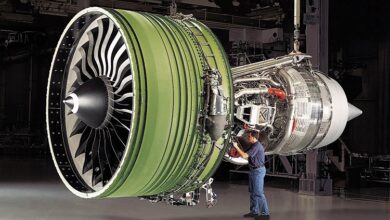Harnessing the Power of Data Analytics: A Practical Guide
Unlock the secrets hidden in your data and drive informed decision-making.
Introduction to Data Analytics
Data analytics has emerged as a transformative force in today’s data-driven world, revolutionizing how organizations make decisions and strategize for the future. At its core, data analytics involves the systematic examination of data to uncover patterns, draw conclusions, and inform decision-making. The importance of data analytics cannot be overstated. In an era where data is generated at an unprecedented rate, the ability to analyze and interpret this information effectively is crucial for organizations across all sectors. Data analytics provides a framework for understanding historical performance, forecasting future trends, and making informed strategic choices. It empowers businesses to identify opportunities for growth, optimize operations, and enhance customer experiences.
Types of Data Analytics
Understanding the different types of data analytics is crucial for leveraging its full potential and addressing various business needs. Each type has a different function and offers unique insight.
1) Descriptive Analytics
Descriptive analytics is focused on summarizing historical data, in order to comprehend prior performance. It answers questions like “What happened?” by using methods such as reporting, data aggregation, and data visualization. Common tools include dashboards and reports that highlight trends, patterns, and anomalies in historical data. For example, a retail store might use descriptive analytics to analyze sales data over the past year to understand seasonal trends.
2) Predictive Analytics
Predictive analytics forecasts future trends, using previous data. It uses statistical models and machine learning techniques to predict outcomes and answer questions like “What is likely to happen?” Predictive models analyze patterns and correlations in historical data to make informed predictions. For instance, a financial institution might use predictive analytics to anticipate customer credit risk and detect potential fraud.
3) Prescriptive Analytics
Prescriptive analytics suggests ways to maximize results, going beyond simple prediction. It answers “What should we do?” through techniques such as optimization and simulation. This type of analytics provides actionable insights and decision support, often involving complex algorithms to suggest the best course of action. For example, a logistics company might use prescriptive analytics to determine the most efficient delivery routes.
4) Diagnostic Analytics
Understanding the causes of past outcomes is the main goal of diagnostic analytics. It provides an explanation for “Why did that happen?” by examining data to find underlying causes and variables that affect particular outcomes. Techniques such as drill-down analysis and correlation studies are used to uncover underlying issues. For example, a business might use diagnostic analytics to investigate a sudden drop in customer satisfaction and identify contributing factors.
By leveraging these different types of data analytics, organizations can gain comprehensive insights into past performance, future possibilities, and optimal actions, driving more informed and strategic decision-making.
Data Collection and Preparation
Data collection and preparation are foundational steps in the data analytics process, setting the stage for effective analysis and accurate insights. This phase involves gathering, cleaning, and structuring data to ensure it is ready for analysis.
1)Methods for Gathering Data
Data can be collected from various sources, both internal and external. Internal sources include company databases, customer records, and transaction logs. External sources might involve public datasets, social media, and third-party APIs. The choice of data sources depends on the business objectives and the type of analysis required. Methods for data collection include web scraping, surveys, and direct data extraction from databases.
2) Data Cleaning
Data cleaning is crucial for ensuring the accuracy and reliability of the dataset. It involves identifying and correcting errors, such as duplicate records, incorrect entries, and missing values. Common techniques include imputation (replacing missing values with estimates), standardizing data formats, and removing duplicates. Data cleaning helps prevent issues that could lead to misleading analysis results.
3) Data Transformation
Once cleaned, data often requires transformation to be suitable for analysis. This may include normalizing data (scaling data to a common range), encoding categorical variables (converting text labels into numerical values), and aggregating data (summarizing detailed data into higher-level views). These transformations ensure that the data is in a format that aligns with analytical models and tools.
4) Data Integration
Combining data from multiple sources is essential for a comprehensive analysis. Data integration involves merging datasets, resolving discrepancies, and ensuring consistency across data sources. This process helps create a unified dataset that provides a holistic view, facilitating more accurate and insightful analysis.
Effective data collection and preparation are essential for ensuring that subsequent analysis is based on high-quality, well-structured data, ultimately leading to more accurate and actionable insights.
Exploratory Data Analysis (EDA)
Exploratory Data Analysis (EDA) is a crucial phase in the data analytics process that involves examining and summarizing the main characteristics of a dataset. This step is designed to understand the data’s structure, uncover underlying patterns, and identify anomalies or relationships before applying more complex analytical methods.
1) Descriptive Statistics
The first step in EDA involves calculating descriptive statistics, such as mean, median, mode, variance, and standard deviation. These metrics provide a summary of the dataset’s central tendencies and dispersion, offering insights into the overall data distribution. Descriptive statistics help in understanding the basic features of the data, including its range and variability.
2) Data Visualization
Visualization is a powerful tool in EDA, as it helps to reveal patterns, trends, and relationships that might not be apparent from raw data alone. Common visualization techniques include histograms to show data distribution, scatter plots to examine relationships between variables, and box plots to identify outliers. Tools like Matplotlib, Seaborn, and Tableau are often used to create these visualizations.
3) Identifying Patterns and Trends
EDA involves exploring the data to identify significant patterns and trends. This might include detecting seasonal variations, correlations between variables, and clustering of data points. Identifying these patterns helps in forming hypotheses and guiding further analysis.
4) Uncovering Anomalies
Another critical aspect of EDA is detecting anomalies or outliers—data points that deviate significantly from the norm. Anomalies can indicate data quality issues, errors, or interesting deviations that may warrant further investigation.
By performing thorough exploratory data analysis, data scientists gain a deep understanding of the dataset, which informs subsequent stages of analysis and model building. EDA helps in shaping the direction of the analysis and ensures that the insights derived are based on a solid understanding of the data.
Advanced Data Analytics Techniques
Advanced data analytics techniques enhance the ability to derive insights from complex and large datasets.
1) Machine Learning
Machine learning applies algorithms to analyze data and make predictions without explicit programming. Supervised learning techniques, like regression and classification, predict outcomes based on historical data, while unsupervised learning methods, such as clustering, identify hidden patterns and relationships.
2) Big Data Analytics
Big data analytics handles vast volumes of data that traditional tools cannot efficiently process. It utilizes distributed computing frameworks like Hadoop and Spark to analyze and extract insights from large datasets. This technique enables businesses to uncover trends and patterns that are not visible in smaller datasets.
3) Real-Time Analytics
Real-time analytics processes data as it is generated, providing immediate insights and enabling timely decision-making. Techniques include stream processing and real-time data integration, essential for applications like fraud detection and real-time customer analytics.
Conclusion
Advanced data analytics techniques are pivotal in transforming complex datasets into actionable insights, driving more informed decision-making. Mastering these techniques requires a robust understanding of data science principles and hands-on experience with various tools and methodologies. For those seeking to excel in data analytics and harness these advanced techniques, enrolling in a data science training institute in Delhi, Noida, gurugram, surat, goa, etc, can provide the essential skills and knowledge. Such training equips professionals with the expertise to effectively apply these techniques, stay current with industry advancements, and tackle complex data challenges, ultimately contributing to successful data-driven strategies and business outcomes.



